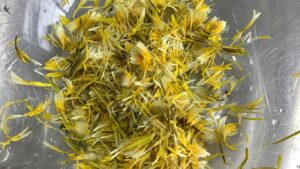News Roundup
Firstly, I would like to say a massive congratulations to all the Ribble Valley Award Finalists; there are so many fantastic businesses in the Ribble Valley that we can all be proud – click here for the full list.
I am so chuffed to be a Finalist in the category of Small Business, and I’m looking forward to getting my glad rags out and meeting up with the other finalists at the award ceremony, Mitton Fold, on 21st March.
If you follow the awards on Facebook, you will have seen some lovely nomination stories; you can take a look at mine below this post.
Dawn Holden of Panda Paramedic was the guest speaker at our February Women in Business networking group, and she explained the importance of being a first responder in the case of a cardiac arrest. We then had training on how to deliver CPR and what to do in the case of someone choking. A very worthy cause indeed. Dawn recommended an app called Lifesaver Mobile which is worth getting, it will take you through the basics of what you need to do.
March Events & Workshops
My workshops are very popular, so please reserve your place as soon as possible to avoid disappointment.
6th Bread Making Workshop 10 am – 2 pm (fully booked)
10th Foraging Walk with Pete from Pendle Plant Craft
13th Women in Business networking with guest speaker Emma Fenwick from Emergise 6 pm – 8.30 pm
15th Farm to Fork Night with Alex Coward and live music from Pete Bennet (only 2 places left)
19th Book Club 7 pm – 9 pm
March Foodie Days
Some say that March has one foot in Winter and one in Spring. I think of it as lots of special occasions where we can get together with our family and friends and enjoy a range of delicious foods.
British Pie Week 4th – 10th March
British Pie Week gives us a perfect opportunity to indulge in your favourite pie without worrying about the cost or the calories. Pies have been in existence since about 2000 B.C., and we Brits have loved them since the 12th century. Pick up your fork and dig in, and if you’re making your own pies, work on getting the crust as flaky as possible.
Celebrate St Patrick’s Day on the 17th with Colcannon, an Irish potato recipe, a mixture of creamy mashed potatoes and kale or cabbage, and if you want to be more adventurous, Good Housekeeping has 47 fantastic recipe ideas for you.
Mothering Sunday 10th
Mother’s Day is still one of the busiest days in the hospitality calendar and the single most popular day for brunch. Open Table says Mother’s Day gets 3 times as many bookings as a typical Sunday on average. Typical fodder may include a home-cooked roast dinner followed by a classic British dessert or afternoon tea.
Easter 31st Roast lamb gets my vote at Easter time, but there are also many sweet treats to enjoy, such as easter eggs, simnel cake and hot cross buns. If you want to try baking your own hot cross buns, try this BBC recipe; it’s one of my favourites.
Foraging in March
It’s starting to get more interesting; here are some items that we covered last month, as well as some new edible delights to look out for:
Chickweed leaves can be used in salads with lemon and olive oil dressing, blended into homemade pesto, or used to liven up fish or chicken. The tiny white, edible flowers also make a pretty salad garnish.
Dandelion leaves can be added to salads, sandwiches or pies. Flowers can be used in a risotto or omelette. Unopened buds can be marinated and used like capers. Roots can also be thrown into stir-fries or added to vegetable dishes, and if you ground the roots, you can even make coffee with it!
Goosegrass can be cooked as a green vegetable or added to soups, stews and pies. You can also eat the seeds but wait until they’ve hardened, then roast and grind as a coffee substitute.
Gorse They are delicious when eaten raw in salads or steeped in fruit tea. Or experiment and infuse its sweet flavour in ice cream or wine.
Hawthorn young leaves and unopened flower buds have a pleasant nutty taste. Clusters can be eaten straight from the hedgerow or added to green salads, potato salad or sandwiches.
Nettle leaves are a surprisingly versatile ingredient and are reputed to be a great superfood, rich in iron and vitamins A and D and packed with minerals. The leaves have a flavour somewhere between cabbage and spinach. You can use nettle leaves like spinach or make tea, beer or soup (try creamy nettle and potato).
Wild garlic leaves can be added to soups, sauces, or omelettes. Make a wild garlic pesto or use it to infuse olive oil. They are also delicious in salads and sandwiches or chopped and mixed with butter to make a delicious version of garlic bread.
If you want to try foraging yourself, Pete from Pendle Plant Craft will explain what to look out for in his next foraging workshop on 10th March.
Have a good un.
Annie




